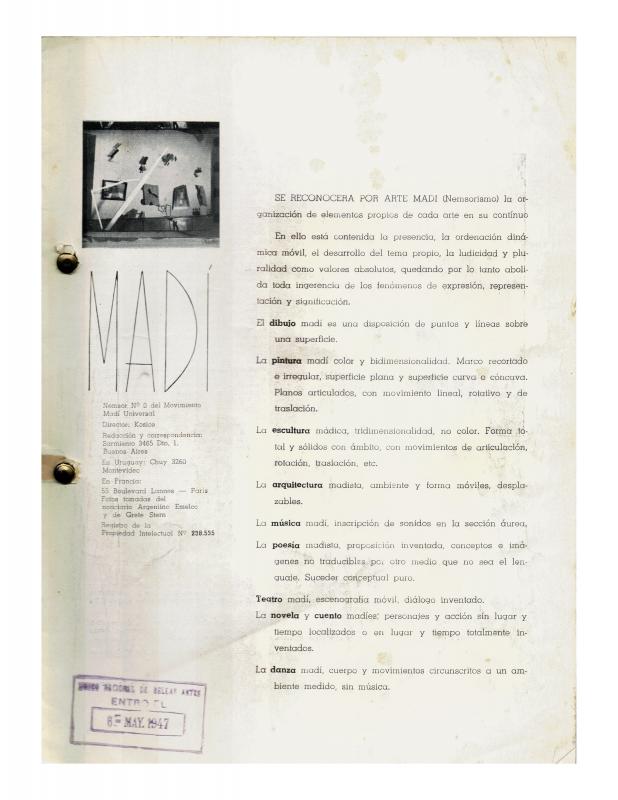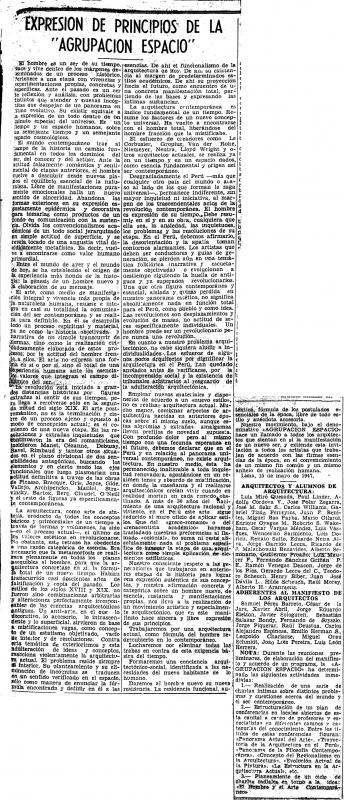This article is of particular interest because it documents the confusion and mocking attitudes that were prevalent in certain conservative establishment circles and the traditionalist art world in Peru, in response to the cosmopolitan avant-garde after the Second World War (in the mid-twentieth century).
In 1950 the Galeríe Colette Allende in Paris organized an exhibition of Arte Madí that included works by the Uruguayan artist Carmelo Arden Quin (1913–2010), the Argentine Gregorio Vardánega (1913–2007), the Frenchman Roger Desserprit (1923–85), and the Peruvian Jorge Eduardo Eielson (1924–2006); the latter had lived in Europe since 1948. [On the subject of the Movimiento Madí, see the “Manifiesto Madí” (doc. no.732008); and Kosice’s dictionary of invented terms (doc. no.1297301)]. Before distancing himself from Peru’s conservative circle, which he found stifling, Eielson had already made a name for himself as a poet and was a member of the Agrupación Espacio, a group of intellectuals who helped to modernize local architecture and art. [See the following in the ICAA digital archive, “Expresión de principios de la Agrupación Espacio” by Miró Quesada Garland et al. (doc. no. 1126309)]. The association published a positive review of Eielson’s work in El Comercio (Lima, July 30, 1950). Alberto Jochamowitz (1881–1974), an influential engineer, critic, and regular contributor to Cultura Peruana magazine—who at that time was the Cultural Attaché at the Peruvian Embassy in Paris—took the opposite view. Having spent most of his life in Europe, Jochamowitz was a privileged observer of European avant-garde movements, which he was among the first to review for the Peruvian media as in, for example, his sarcastic but very well researched article about the Cubist event at Le Salon d’Automne (Paris, June 1912). He had boundless praise for artists such as Henri Matisse and Paul Cézanne, but took an eclectic and rather dim view of the more experimental “isms,” as demonstrated by his admiration for the Peruvian academic portrait artist Carlos Baca Flor (1865–1941), whose biography he (Jochamowitz) published in 1941.


